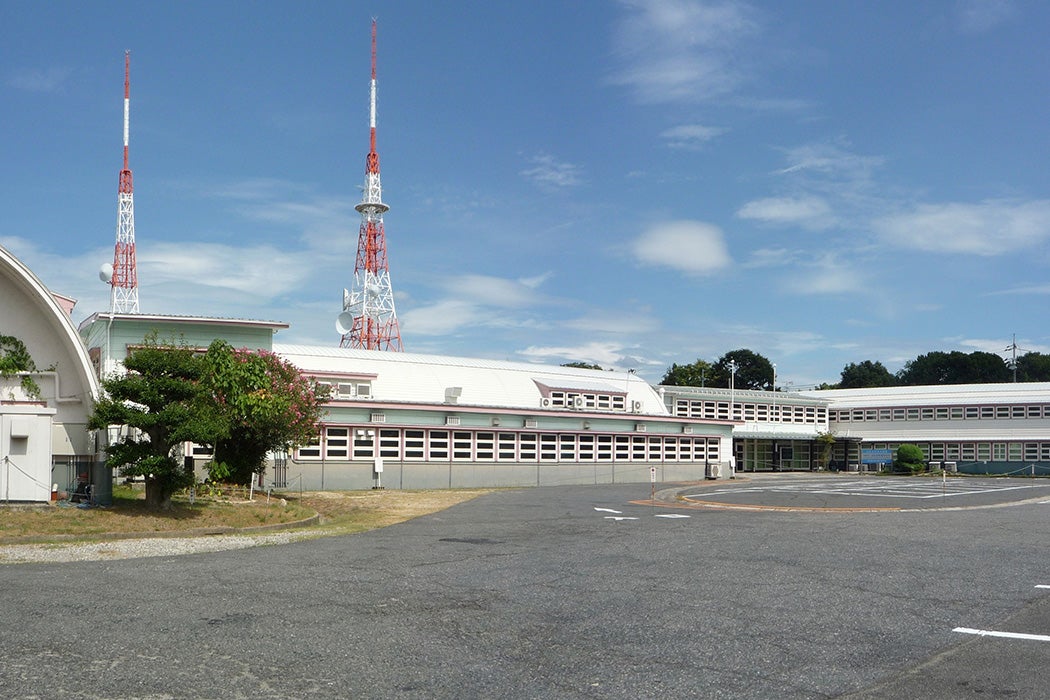Biological samples from survivors of the only uses of nuclear weapons in war are preserved in Radiation Effects Research Foundation (RERF) facilities located in Hiroshima and Nagasaki, Japan. These facilities make up a biobank of what historian of science M. Susan Lindee calls the “first true residents of the atomic age.”
Lindee describes the RERF holdings as “materials from about 25,000 participants in the Adult Health Study of atomic bomb survivors, and about 12,000 participants in the study of offspring of survivors.” The collection includes “1.8 million tubes of biosamples (750,000 of serum, 370,000 of plasma, 500,000 of blood cells, and 210,000 of urine)” stored at –80° C.” There are also 230,000 tubes of “peripheral blood mononuclear cells […] stored in a living state.” The collection also includes tissue samples from autopsies, still births, spontaneous abortions, and neonatal deaths, stored in formalin. Since 1986, teeth—in which radiation exposure from decades earlier can be measured—have also been donated to the center from people undergoing regular dental work.
Of the half dozen ways material came into the collection, Lindee notes, “some involved informed consent, others did not.”
The RERF’s mission is to research the medical effects of radiation. It was established in 1975 as the successor of the Atomic Bomb Casualty Commission (ABCC). The ABCC was founded in 1947 by the US National Academy of Sciences (NAS) with funding from the US Atomic Energy Commission (AEC). When US forces occupied Japan, they confiscated initial autopsy reports and tissue samples taken by Japanese doctors and scientists in the immediate aftermath of the atomic bombings. These “spoils of war,” as one pathologist called them, were returned to Japan in 1973 from the Armed Forces Institute of Pathology in Washington, DC.
Today, the RERF is a joint Japanese-American partnership. The US Department of Energy (DOE), successor agency to the AEC, funds the US’s contributions to the foundation.
The AEC’s Project Sunshine, set up to study the impact of radioactive fallout from atomic testing, included a secret study of human bone samples collected around the world. Sunshine’s own planner called this “body snatching,” but there were evidently few AEC qualms about the samples taken from conquered Japan.
Genetic studies of the offspring of bomb survivors inspired the DOE to begin development of a project to study the human genome. The National Institute of Health later took over leadership of the Human Genome Project. Writes Lindee, “the bomb and its potential genetic effects animated the first plan to map the entire human genome.”
“Every specimen at RERF has a story, a history,” continues Lindee. But those stories were often recorded years after the bombings. Additionally, the initial discrimination faced by A-bomb survivors may have colored their testimony. One way of using the biosamples has been to confirm personal memory of how much radiation individual victims experienced.
But, like more familiar DNA banks, which store information from millions of people, the RERF collection has also become another form of Big Data. Lindee notes that RERF-sourced cell lines available for cancer research don’t reference the “atomic bombs, the survivors, the Cold War, the Allied Occupation of Japan, or radiation risk, though their geographic origins in Japan are stated.”
Weekly Newsletter
“They are instead abstracted, neutral, molecular resources for understanding cancer in general,” Lindee writes. The complex history of these biosamples “is necessarily erased, in the service to a project of generalized, de-historicized knowledge that privilege the strictly biological properties of biological things, even when those things are thoroughly historical, embedded in time in an unforgettable way.”
This August marks seventy-nine years since the US dropped atomic bombs on Hiroshima (August 6, 1945) and Nagasaki (August 9, 1945). There are thousands of atom bombing survivors, called Hibakusha, still living. But there will come a day when there are no longer any Hibakusha alive. Their biosamples, however, may be stored indefinitely—a legacy of an atomic age that also seems to be lasting indefinitely.
Support JSTOR Daily! Join our membership program on Patreon today.







